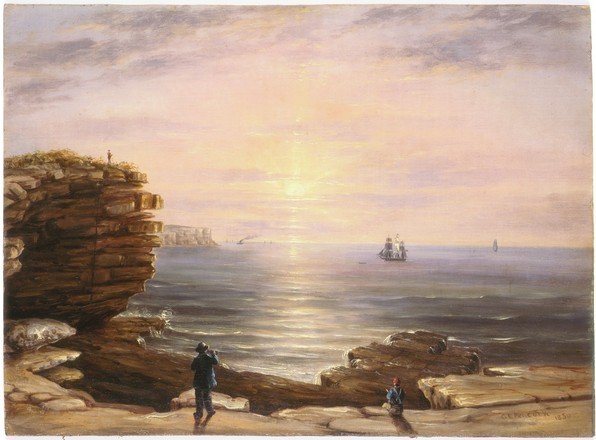
Morning at the 'Heads' of Port Jackson, or the Pilot's Look Out
1850
Oil on board
Bequest of Sir William Dixson, 1932
DG 204
Oil on board
Bequest of Sir William Dixson, 1932
DG 204
With its dramatic rock formations and spectacular views back down the harbour and out to sea, South Head was a popular spot for tourists. It was also used as a lookout post by pilots, whose job was to guide ships safely into the harbour.
By the 1840s, Sydneysiders had embraced the harbour as a place of pleasure, associated with picnics and parties rather than with trade and commerce. Its beauty was proudly celebrated as a counterpoint to the slurs that Europeans liked to throw at the city’s convict origins. Around this time Peacock’s works began appearing on the market, with attractive harbour bays and the exclusive private villas on its foreshores his dominant subject. The number of his works to survive suggest that he was a prolific and therefore a reasonably successful artist.


 Back to list
Back to list